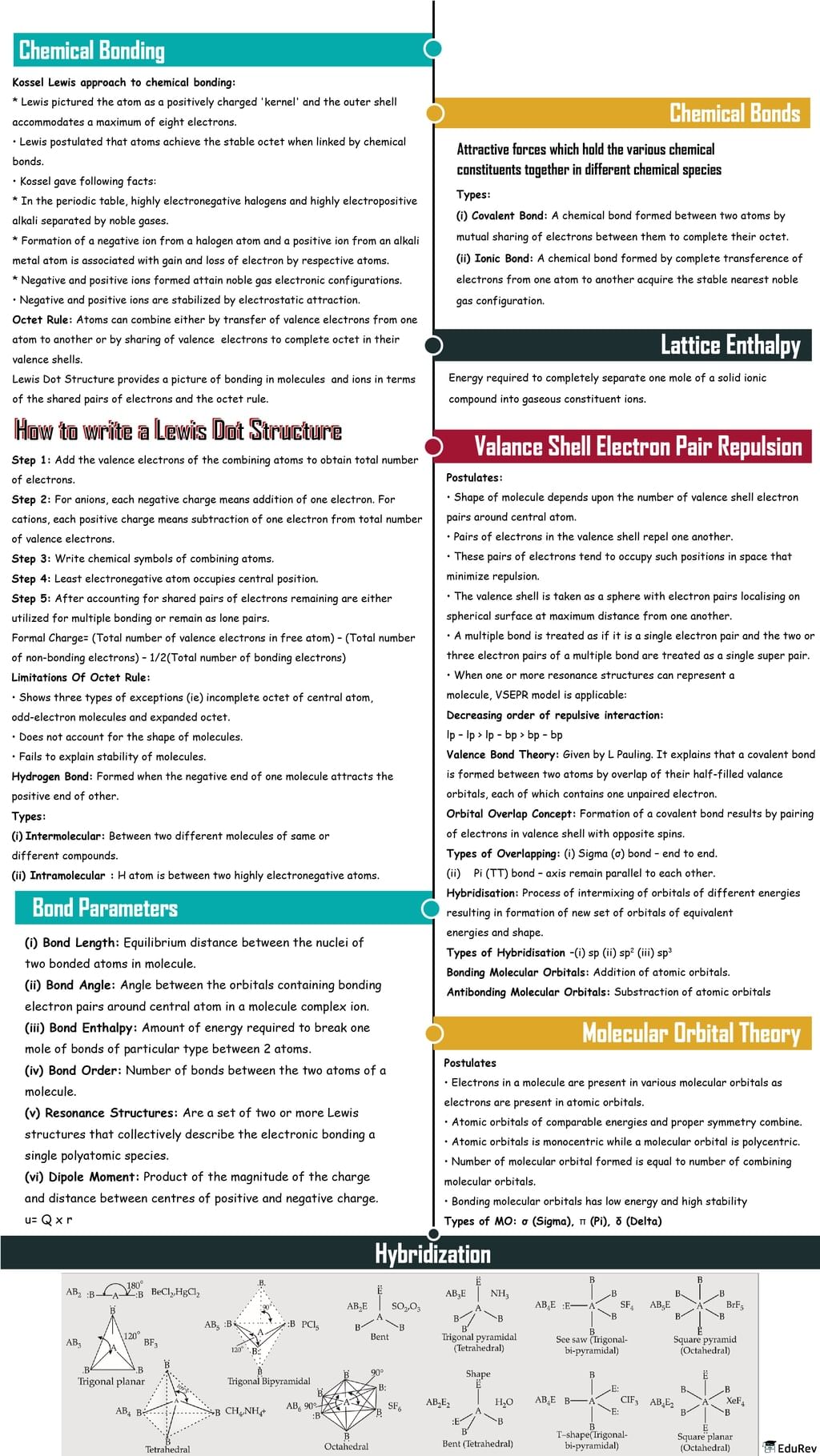NEET Exam > NEET Notes > Chemistry Class 11 > Mind Map: Chemical Bonding and Molecular Structure
Mind Map: Chemical Bonding and Molecular Structure | Chemistry Class 11 - NEET PDF Download

The document Mind Map: Chemical Bonding and Molecular Structure | Chemistry Class 11 - NEET is a part of the NEET Course Chemistry Class 11.
All you need of NEET at this link: NEET
|
114 videos|263 docs|74 tests
|
FAQs on Mind Map: Chemical Bonding and Molecular Structure - Chemistry Class 11 - NEET
| 1. What is a chemical bond? |  |
A chemical bond is a force of attraction that holds two or more atoms together in a molecule. It is formed when atoms share or transfer electrons to achieve a more stable electron configuration.
| 2. What are the different types of chemical bonds? |  |
There are three main types of chemical bonds: ionic bonds, covalent bonds, and metallic bonds. Ionic bonds involve the transfer of electrons between atoms, covalent bonds involve the sharing of electrons, and metallic bonds involve a sea of delocalized electrons surrounding metal cations.
| 3. How does electronegativity affect chemical bonding? |  |
Electronegativity is the ability of an atom to attract electrons towards itself in a chemical bond. When there is a significant difference in electronegativity between two atoms, an ionic bond is formed. If the electronegativity difference is small, a covalent bond is formed.
| 4. What is the VSEPR theory and how does it explain molecular structure? |  |
The VSEPR (Valence Shell Electron Pair Repulsion) theory explains the 3D shape of molecules. It states that electron pairs in the valence shell of an atom repel each other, and the molecule adopts a shape that minimizes these repulsions. This theory helps in predicting the molecular geometry and bond angles in a molecule.
| 5. How do intermolecular forces determine the physical properties of substances? |  |
Intermolecular forces are the forces of attraction between molecules. They determine properties such as boiling point, melting point, and solubility. Stronger intermolecular forces result in higher boiling and melting points, as well as lower vapor pressure.
Related Searches

















